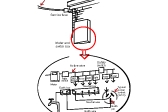
An overview of a typical electrical installation in a home from the local pole transformer, to the service fuse and to your switchbox.

Electrical installations in homes are carried out by licensed electrical contractors. They typically involve first a series of designs, establishing where things like lighting and power outlets will be positioned, as well as where large appliances like rangehoods, exhaust fans, air conditioners, stoves and the like will be installed. All of the decisions around where electricity needs to go will focus on how the home will be used – both to begin with, and in the future.
These designs are normally carried out by an electrical planner, and it’s crucial that they be completed early in the build, to ensure that no further changes are required once things are in place. Revisions to the electrical plan once walls have gone in can significantly add to the cost of your electrical installation.
A typical electrical installation
Have a look at the diagram – that will explain the basic layout. The electrical supply comes into the home from a pole transformer or from a line passing the house with a pole transformer somewhere along the street – or your house may be in a streetscape where the electricity comes in from underground cabling. A service fuse connects the supply to the switchboard / switch box with its power meter and main switch. From there, power is routed to the individual circuit breakers and safety switches for the different light and power circuits in your home.
The diagram shows you the standard type of electrical wiring known as MEN (multiple earth neutral). The important feature of the installation is that earth wires are connected to all power points and to all light fittings with exposed metal parts.
MEN – the basis of electrical installations
Power comes in on two wires; the active and the neutral. Electrical current flows from the power generators, through power lines lines to the suburbs and into your place via the ‘active conductor’ wire, and flows back into the grid via the ‘neutral’ wire.
The pole transformer will have an earth connection to the neutral. In your switchboard there will be a neutral bar (a piece of solid brass) which is connected by wire to another bar (the earth bar – also a solid piece of brass). The earth bar is tied by wire to water pipes or an earth stake to form an ‘earth’.
MEN-the basis of electrical safety
By rights, were you to touch a neutral wire connection point (please – do not actually do this!), you would not receive a shock because there are so many earthing points for the neutral, and you yourself are earthed. A safety switch, mentioned above, monitors if there’s any leakage of electrical current to earth in the circuits it is wired to protect (normally power point circuits).
If it’s all a little confusing, don’t worry – just understand that the earth connection in your home is very important.





